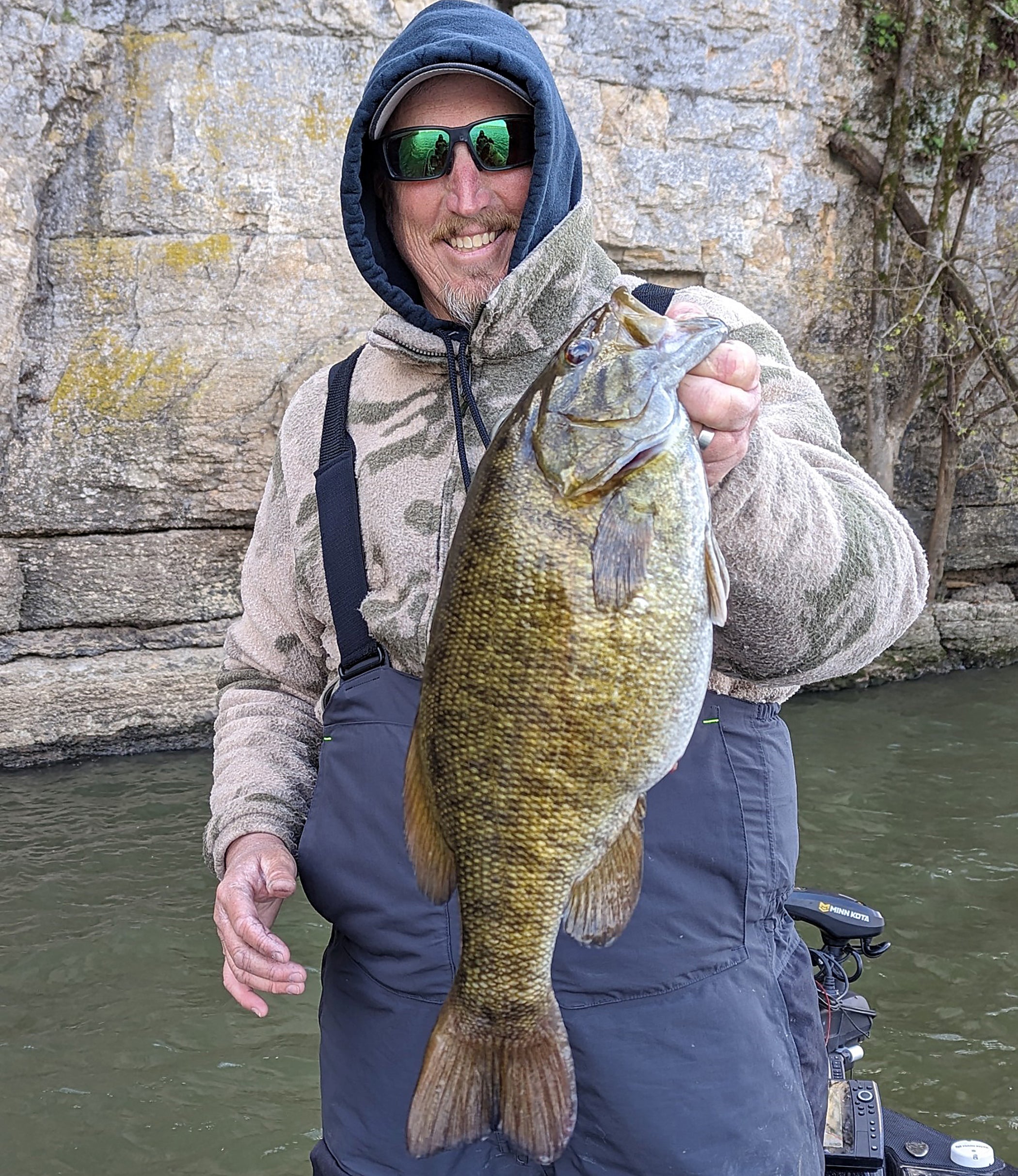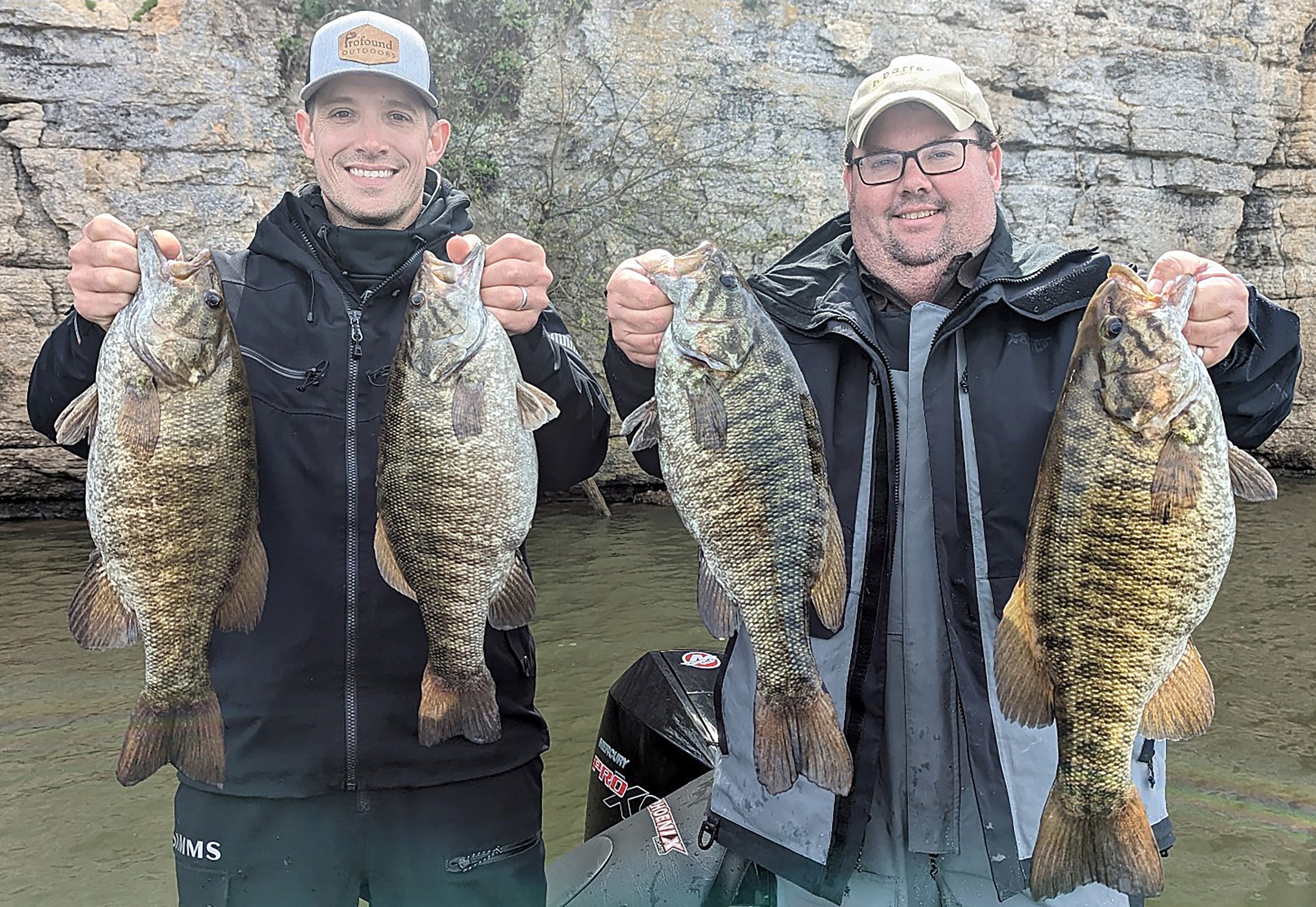By DAVID RAINER, Alabama Department of Conservation and Natural Resources
Veteran Tennessee River guide Jimmy Mason had been on a roll recently until a phenomenon known only to a specialty segment of the media and their numerous guides struck. That phenomenon is known as the outdoor writer’s curse.
Mason guides mainly on Pickwick and Wilson lakes in northwest Alabama, and his clients had landed eight smallmouth bass that weighed 6 pounds or better. For those who aren’t familiar with smallmouth fishing, that 6-pound mark is the holy grail, similar in accomplishment to catching a 10-pound largemouth bass.
The day before I headed to Florence to join Mason for a day of fishing, the weather forecast indicated only a miniscule chance of rain. When I got to the destination, the rain chances were upped to 40%. Yep, you guessed it – it rained on us almost the entire time we were on the water.
Meanwhile, Mason had to borrow a friend’s bass boat because of trolling motor issues on his new boat.
Undaunted, we launched at McFarland Park and headed for the Wilson Dam tailrace on Pickwick, expecting the smallmouth that had been so willing to bite during the previous week to still be cooperative.
Wrong. We were throwing the favorite swim baits into the current in all of Mason’s honey holes and basically came up empty. After a couple of unproductive hours, I asked him if he’d ever heard of the outdoor writer’s curse. He had no idea what I was talking about. I texted one of my outdoor writer buddies from Huntsville and told him how tough the fishing was. His response was “outdoor writer’s curse.”
I finally hooked a fish and thought the drought might be coming to an end, but I soon realized it wasn’t a hard-charging, drag-stripping smallmouth on the line. It was a blue catfish, about 4 pounds.
The next strike, about an hour later, had me a little more excited because of the fight. Nope, it was a 4-pound hybrid striped bass.
After hitting all of Mason’s favorite spots, he said, “Let’s load the boat and head to Wilson.”
About 30 minutes later, we were putting the boat in near the Wheeler tailrace on Wilson, where Mason has had great success.
“How long has it been since you’ve been skunked,” I asked.
“At least a couple of years,” Mason said.
“You probably had an outdoor writer in the boat,” I responded.
Mason finally connected and thought the day might be improving, but it was a 2-pound largemouth. He caught another largemouth and a hybrid before we finally cried “Uncle.”
To cap the frustrating day, and at least add a comical ending to it, I managed to accidentally pull the cord on my inflatable life jacket as we got out on the boat ramp and ended up looking like Chris Farley in the movie Tommy Boy.
I asked Mason when the best time is to catch a trophy smallmouth.
“Until today, I would have said right now,” he laughed. “You know Pickwick is known for its smallmouth. So many of my clients come here for that smallmouth of a lifetime. Pickwick and Wilson, which I look at as almost interchangeable, are two of the best lakes to have a chance to catch that 6-pound smallmouth. This time of year, they’re moving up in that pre-spawn feed.”
Mason said the smallmouth bite can happen as early as February when north Alabama has a warm spring, but with normal weather patterns, the smallmouth pre-spawn feed happens during March and can extend into April.
“Current is such a big deal on the Tennessee River,” he said. “You’re looking for eddies. You’re looking for areas where the current will bring the bait to them, like rock piles, gravel bars, shell beds and high spots, anywhere the fish can sit in the slower water and wait for bait coming by in the faster water.”
Mason said those conditions could be available in a variety of water depths from 3 to 5 feet to as deep as 10 to 12 feet.
“During the pre-spawn feed, a lot of fish will get right on the rip-rap banks, the bluff banks,” he said. “That’s when you can go with crankbaits, like the 200 Bandit in red colors or a Bomber Flat A. You want a bait with a tight wiggle that will get down to 6 to 8 feet. You’re looking to imitate a crawfish. You’ve got to get tight to the rocks, making those long casts parallel to the rocks. The fish are sitting in those little current eddies along the rocks.”








